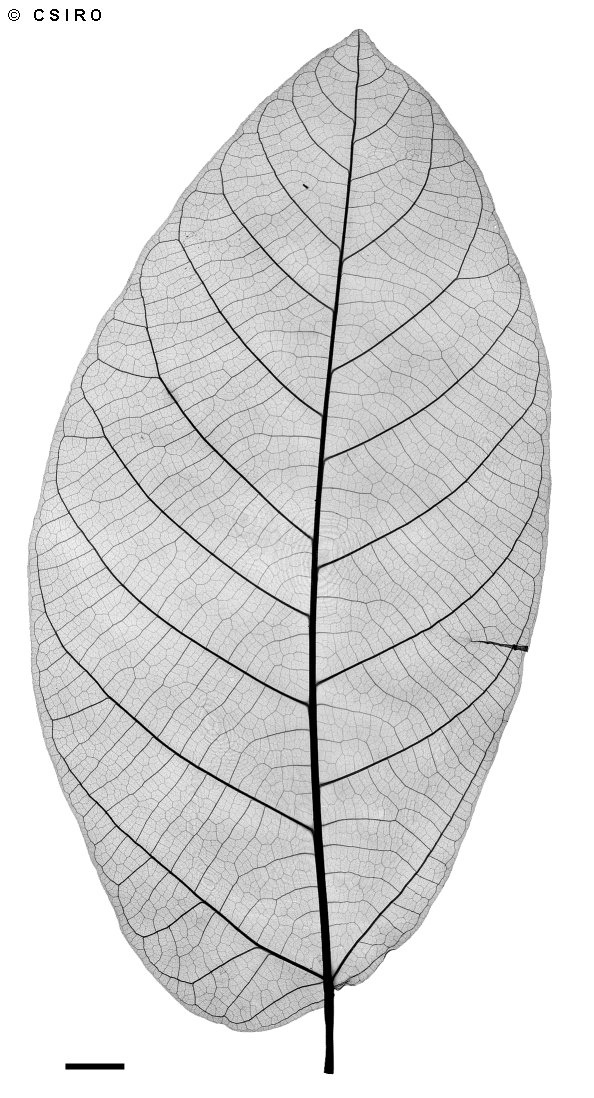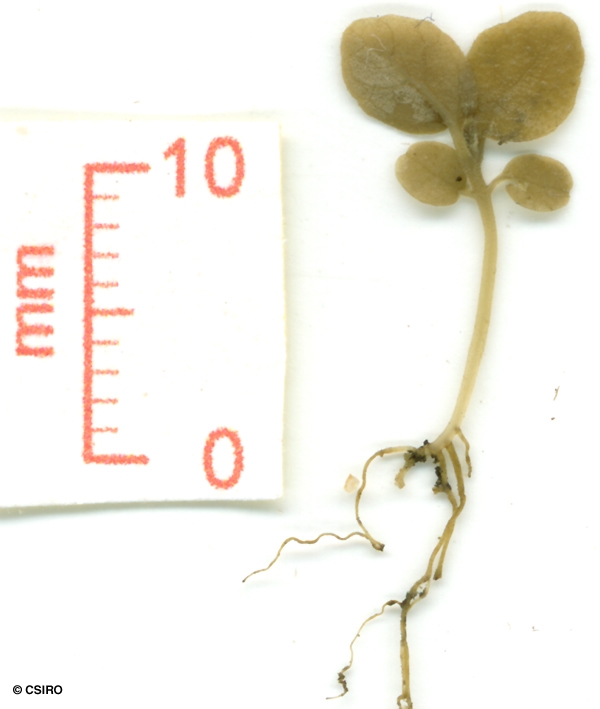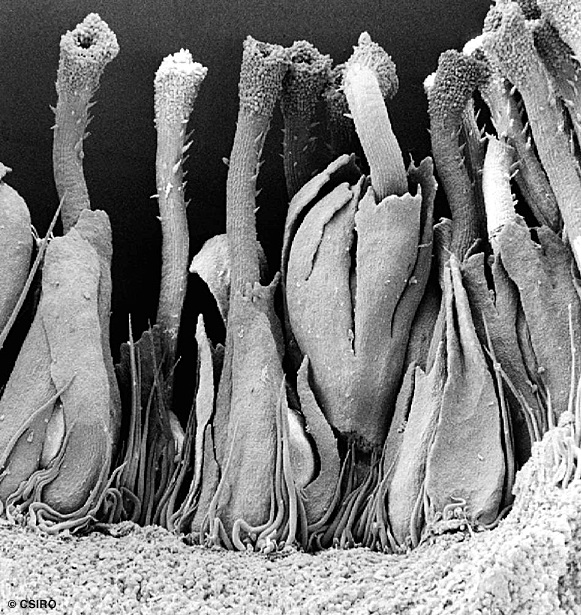Australian Tropical Rainforest Plants - Online edition
Ficus melinocarpa Blume




Blume, C.L. von (1825) Bijdragen tot de Flora van Nederlandsch Indie 9: 460. Type: Salak, Java.
Fig
Petioles and twigs produce a clear watery exudate which turns yellowish on exposure. Stipules about 0.5-1 cm long. Oil dots visible on the underside of the leaf blade with the aid of a lens. Leaf blades about 16-20 x 7-9 cm, slightly sandpapery on the upper surface and sometimes also on the lower surface.
Figs pedunculate, +/- globular, about 15 mm diam. Orifice closed by interlocking apical and internal bracts.
Cotyledons orbicular, about 2-3 mm diam. At the tenth leaf stage: leaf blade ovate, apex acute, base obtuse, margins sinuate or crenate, both the upper and lower surfaces scabrous, teeth indistinct; stipules sheathing the terminal bud, triangular; petiole and stem scabrous hairs. Seed germination time 32 days.
Occurs in CYP. Altitudinal range from near sea level to 200 m. Grows in well developed rain forest and in drier, more seasonal rain forest. Also occurs in New Guinea and the Philippines.





